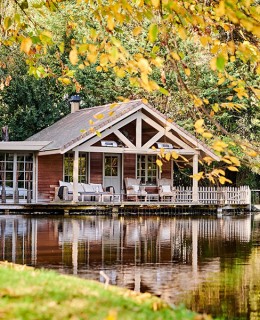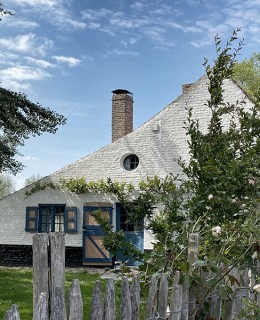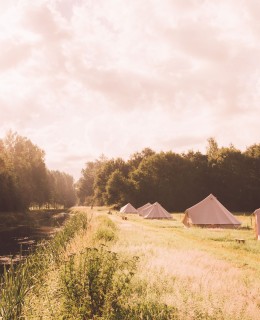Living your best 1919 life on the thundering tunes of a nearby rollercoaster, with the ghosts of Christopher Robin and Winnie the Pooh looming around the corner: no my friend, this place will nòt provide rest to anyone with an overactive imagination. Boom, pow, wow! And then all went quiet. Let me take you back in time, to the deafening silence of post-world-war I Belgium. The Westhoek, once an affluent area boasting over forty proud castle domains, had been the sad stage of the gruesome trench war and was left shaken to say the least. The crazy amount of landmines and mortar shells had crushed the entire landscape like a giant mixer and left nothing more than puddles of mud and craters. Imagine baron Gaston de Vinck’s heartbreaking surprise when he drove home in 1919 and couldn’t even find one stone of his home , the once grant “Kasteel Hooghe”, standing. Instead of relocating to one of his other properties or seeking shelter with wealthy relatives, the man decided to stay and start over. He sat himself, his wife and their six (!) children up in a stone barrack somewhere in the no man’s land that had once been his castle park. To encourage the local community to return too, he offered every family a likewise emergency house -basic timber shacks, with an extra unit added per family member. It took enormous effort and zest for life to rebuild what had once been, and his commitment didn’t go unnoticed. Even then-queen Elisabeth came down to his barrack for a taste of the simple life in her recovering country. After two years, the Vinck family moved to their newly built manor house and their grounds would go on to become an attraction park, Bellewaerde, in the seventies -not sure what the baron would have thought of that. The barrack was abandoned and slowly crumbled into decay, until one couple of history lovers bought and restored it to its former glory. They rent it out nowadays as a playful and family-friendly time-travelling shack, were you can experience life as it was in 1919. All thrifted furniture is authentic, as are the wallpaper, dishes and even the soap! Admittedly, nothing screams “unsexy” like WWI’s brown soap, but thumbs up anyway for this finishing touch. There’s no running water (iron bath tub provided in the back), the kitchen and bathroom are one and the same corner (a screen is there to shield coy women from prying eyes) and needless to say: forget about electricity, candle light it is. Cooking is to be done on the central stove and speaking about the local cuisine: everything is on hands to make pancakes -compliments of the house. The experience is all the more absurd, given the fact that the barrack’s next-door neighbor is a modern attraction park. Who’s it for? History lovers, bittersweet daydreamers and people trying to write a historic novel -or, consequently, a scientific study on the merits of pancakes. Kids love the whole experience too, as well the bucolic playing field that stretches out in front of the barrack. In the back, you spot the trees of the Craterbos, an otherworldly forest that grew in and around the craters left on the battlefield. I can’t help but think of Winnie The Pooh’s Hundred Acre Wood when I see it, as the famous children’s book has been written by a man who witnessed the horror of the trench war and sought solace in a likewise fairytale wood. Funny detail: there is a modern extension to the barrack, so if you’re sick of 1919 and want to go back to wifi, electricity and rain showers, you’re only a door push away from modernity. Tiny detail: pushing said door will make you pay full price instead of the lesser, 1919 rate ànd you won’t receive the very important certificate stating you’re a true, time-travelling trooper afterwards. It’s a tough one, I know. Also, in case your hunger for local history is insatiable, the owners of Barak de Vinck organize “story walks”, where a local guide takes you along secret alleys and country roads, recalling the personal and often forgotten stories that unraveled there over a hundred years ago.
Tiny Belgian Time Capsules: back to 1919
June 10, 2020






























